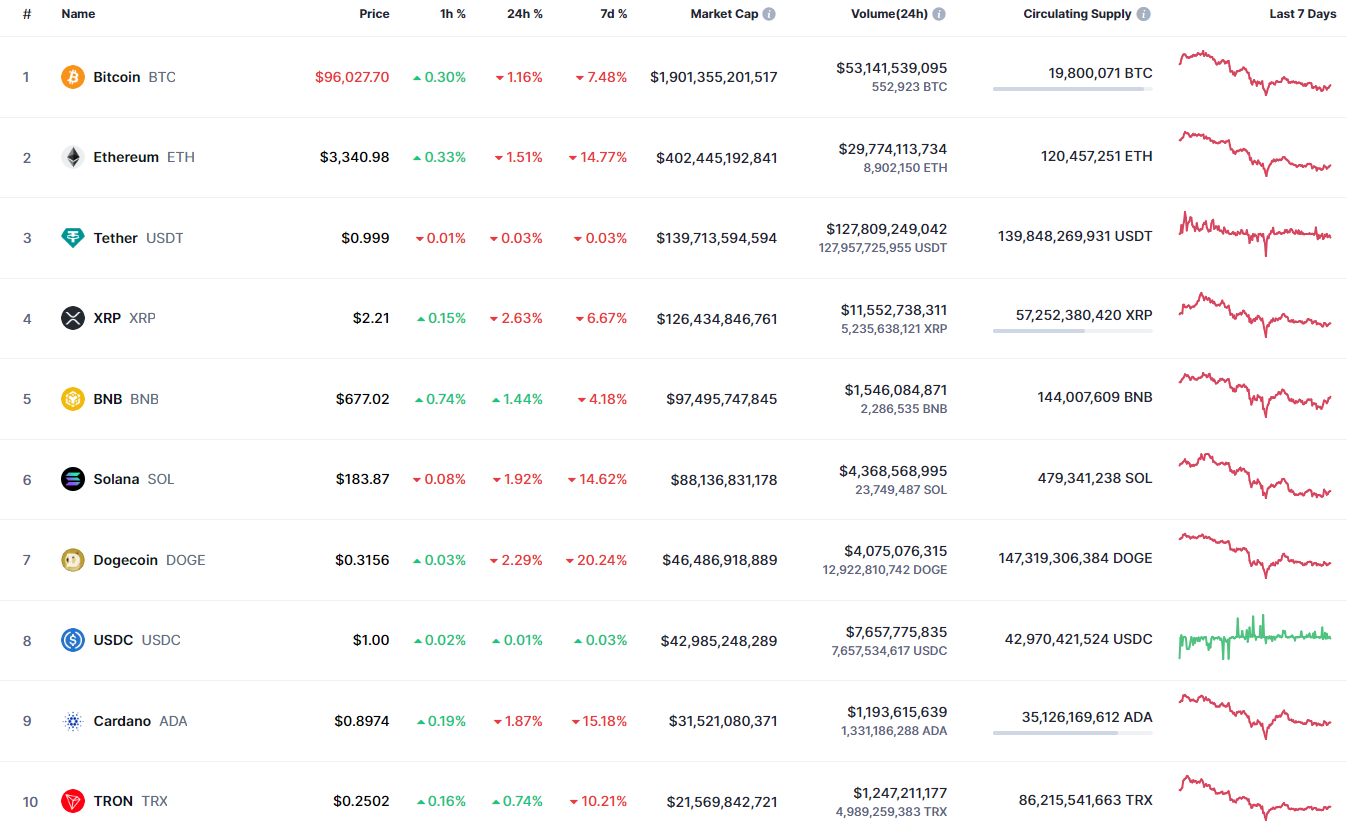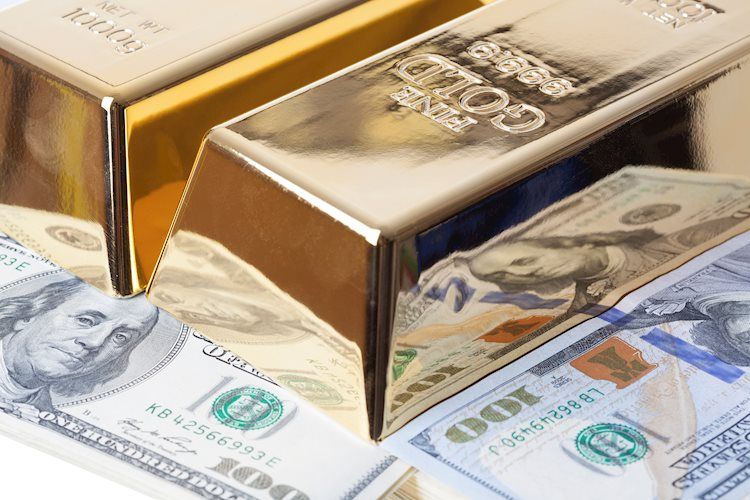Category: Forex News, News
Euro struggles to gather recovery momentum
- EUR/USD holds slightly above 1.0400 after posting gains on Friday.
- The upbeat risk mood could help the pair hold its ground.
- Trading conditions could remain thin heading into the Christmas break.
Following the sharp decline seen after the Federal Reserve’s policy announcements midweek, EUR/USD staged a rebound and closed in positive territory on Friday. The pair struggles to preserve its recovery momentum early Monday but manages to hold slightly above 1.0400.
Euro PRICE Last 7 days
The table below shows the percentage change of Euro (EUR) against listed major currencies last 7 days. Euro was the weakest against the US Dollar.
| USD | EUR | GBP | JPY | CAD | AUD | NZD | CHF | |
|---|---|---|---|---|---|---|---|---|
| USD | 0.84% | 0.47% | 1.99% | 1.06% | 1.71% | 2.00% | 0.17% | |
| EUR | -0.84% | -0.32% | 1.26% | 0.28% | 1.03% | 1.23% | -0.61% | |
| GBP | -0.47% | 0.32% | 1.44% | 0.60% | 1.35% | 1.53% | -0.29% | |
| JPY | -1.99% | -1.26% | -1.44% | -0.93% | -0.27% | 0.04% | -1.70% | |
| CAD | -1.06% | -0.28% | -0.60% | 0.93% | 0.70% | 0.92% | -0.89% | |
| AUD | -1.71% | -1.03% | -1.35% | 0.27% | -0.70% | 0.19% | -1.62% | |
| NZD | -2.00% | -1.23% | -1.53% | -0.04% | -0.92% | -0.19% | -1.81% | |
| CHF | -0.17% | 0.61% | 0.29% | 1.70% | 0.89% | 1.62% | 1.81% |
The heat map shows percentage changes of major currencies against each other. The base currency is picked from the left column, while the quote currency is picked from the top row. For example, if you pick the Euro from the left column and move along the horizontal line to the US Dollar, the percentage change displayed in the box will represent EUR (base)/USD (quote).
The improving risk sentiment and the softer-than-forecast inflation data from the US made it difficult for the US Dollar (USD) to find demand on Friday. Congress’ approval of a stopgap spending bill late Friday triggered a rally in Wall Street’s main indexes and dragged US Treasury bond yields lower.
The core Personal Consumption Expenditures (PCE) Price Index, the Federal Reserve’s (Fed) preferred gauge of inflation, rose 0.1% on a monthly basis in November, the US Bureau of Economic Analysis reported on Friday. This reading followed the 0.3% increase recorded in October and came in below the market expectation of 0.2%.
In an interview with the Financial Times (FT) on Monday, European Central Bank (ECB) President Christine Lagarde repeated that they are getting very close to the stage when they can declare that they have sustainably brought inflation to the medium-term target of 2%.
The Conference Board’s Consumer Confidence Index for December will be featured in the US economic calendar on Monday. Meanwhile, US stock index futures were last seen rising between 0.3% and 0.7% on the day. In case risk flows continue to dominate the action in the second half of the day, the USD could have a hard time gathering strength and allow EUR/USD to hold its ground. Nevertheless, thin trading conditions ahead of the Christmas holiday could limit the pair’s volatility.
EUR/USD Technical Analysis
The Relative Strength Index (RSI) indicator on the 4-hour chart stays slightly below 50, highlighting a lack of bullish momentum.
On the upside, immediate resistance is located at 1.0440 (static level) before 1.0490-1.0500, (100-period Simple Moving Average (SMA), static level). Looking south, supports could be spotted at 1.0400 (static level, round level), 1.0350 (static level) and 1.0300 (static level, round level).
Euro FAQs
The Euro is the currency for the 19 European Union countries that belong to the Eurozone. It is the second most heavily traded currency in the world behind the US Dollar. In 2022, it accounted for 31% of all foreign exchange transactions, with an average daily turnover of over $2.2 trillion a day. EUR/USD is the most heavily traded currency pair in the world, accounting for an estimated 30% off all transactions, followed by EUR/JPY (4%), EUR/GBP (3%) and EUR/AUD (2%).
The European Central Bank (ECB) in Frankfurt, Germany, is the reserve bank for the Eurozone. The ECB sets interest rates and manages monetary policy. The ECB’s primary mandate is to maintain price stability, which means either controlling inflation or stimulating growth. Its primary tool is the raising or lowering of interest rates. Relatively high interest rates – or the expectation of higher rates – will usually benefit the Euro and vice versa. The ECB Governing Council makes monetary policy decisions at meetings held eight times a year. Decisions are made by heads of the Eurozone national banks and six permanent members, including the President of the ECB, Christine Lagarde.
Eurozone inflation data, measured by the Harmonized Index of Consumer Prices (HICP), is an important econometric for the Euro. If inflation rises more than expected, especially if above the ECB’s 2% target, it obliges the ECB to raise interest rates to bring it back under control. Relatively high interest rates compared to its counterparts will usually benefit the Euro, as it makes the region more attractive as a place for global investors to park their money.
Data releases gauge the health of the economy and can impact on the Euro. Indicators such as GDP, Manufacturing and Services PMIs, employment, and consumer sentiment surveys can all influence the direction of the single currency. A strong economy is good for the Euro. Not only does it attract more foreign investment but it may encourage the ECB to put up interest rates, which will directly strengthen the Euro. Otherwise, if economic data is weak, the Euro is likely to fall. Economic data for the four largest economies in the euro area (Germany, France, Italy and Spain) are especially significant, as they account for 75% of the Eurozone’s economy.
Another significant data release for the Euro is the Trade Balance. This indicator measures the difference between what a country earns from its exports and what it spends on imports over a given period. If a country produces highly sought after exports then its currency will gain in value purely from the extra demand created from foreign buyers seeking to purchase these goods. Therefore, a positive net Trade Balance strengthens a currency and vice versa for a negative balance.
Written by : Editorial team of BIPNs
Main team of content of bipns.com. Any type of content should be approved by us.
Share this article:









